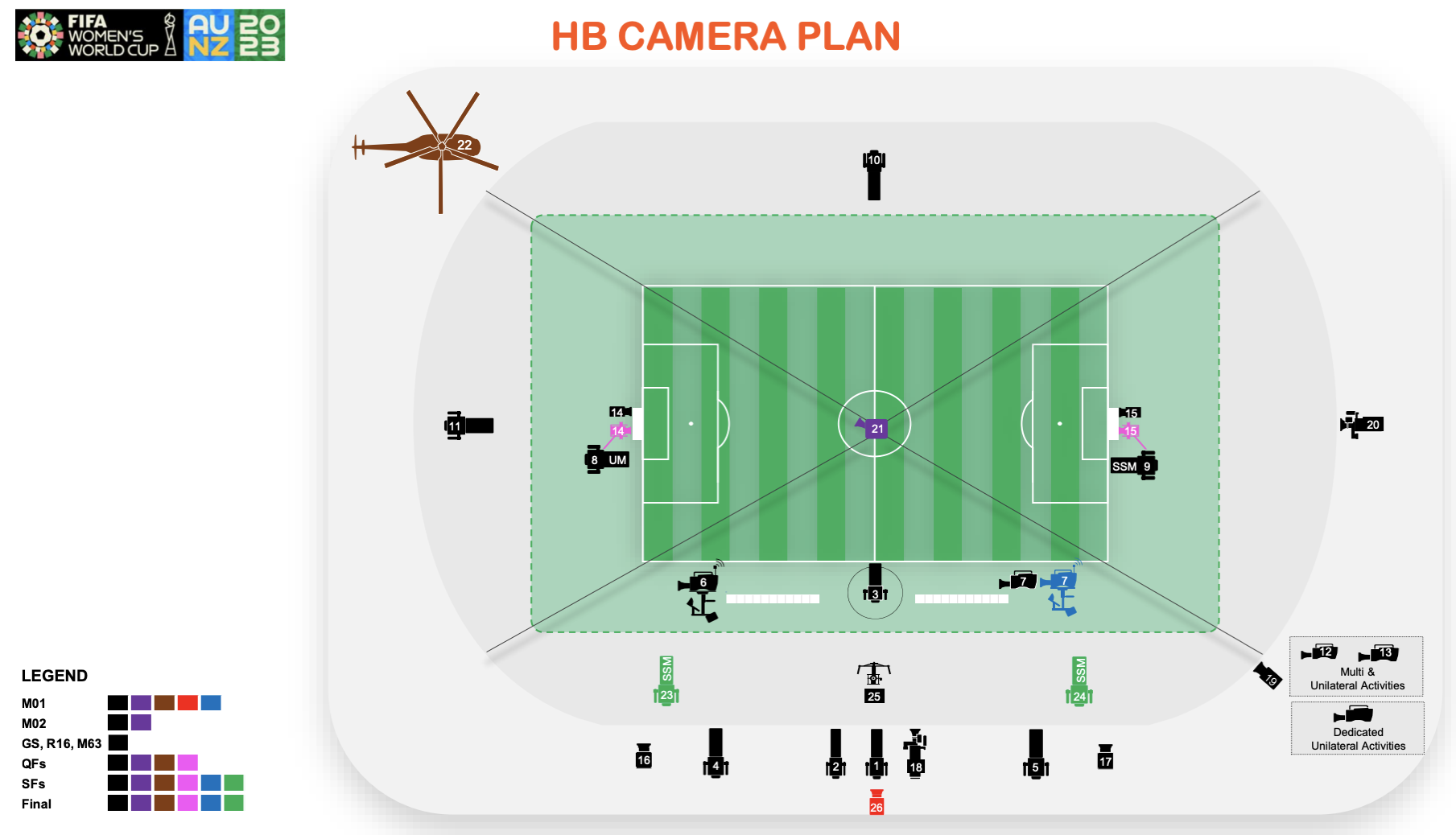
How the FIFA Women's World Cup has risen from small beginnings to become one of the key global sporting tournaments of the year and generating headlines all round the world.
The FIFA Women's World Cup, a celebration of women's football, has come a long way since its inaugural tournament won by the USA, this year’s favourites, in China in 1991. It is no longer an understudy or afterthought to the men’s game. As the 2023 tournament begins, the evolution of broadcasting technology (for us) also takes centre stage, bringing in a new era of (hopefully) captivating storytelling and enhanced viewer experiences. I wanted to dive into the technology employed by broadcasting teams to bring the excitement of the FIFA Women's World Cup to millions of viewers worldwide, while providing a bit of perspective by how this year's event compares to previous tournaments.
The early days: Modest beginnings (1991-1999)
In its early years, the FIFA Women's World Cup struggled to gain significant traction in the broadcasting world. Limited resources and perceived lower viewership resulted in frankly minimal coverage. This was reflected in the (lack of) investment seen at domestic and international levels. Basic camera setups, restricted camera angles, and 4:3 standard definition broadcasts characterised this era. However, a handful of broadcasters including SportsChannel America (no European broadcasters decided to air the tournament) recognised the potential of women's football and laid the groundwork for future expansions by broadcasting the 1991 World Cup.
Technological advancements and global reach (2003-2011)
As women's football started gaining momentum, the broadcast quality of the FIFA Women's World Cup made substantial progress. The turn of the millennium marked a technological leap forward with HD broadcasts and more sophisticated camera setups, elevating the visual experience for viewers. This shift not only enhanced the clarity of the action on the field but also contributed to a surge in global viewership.
Major European and global networks started to pick up on the potential of the women’s game, with the BBC one of the first (in the EU) to broadcast matches in 2007. The expansion of satellite and cable television, coupled with the rise of early digital streaming services, significantly extended the tournament's reach to new territories. As more countries embraced women's football, broadcasters recognised the commercial potential and invested in securing broadcasting rights, leading to a rise in revenue from broadcast deals.
From regional to global phenomenon (2015-2019)
The 2015 FIFA Women's World Cup in Canada marked a major turning point for the tournament's broadcasting landscape. With increased media coverage in Europe (and the rise of major, new powerhouse domestic European teams such as Chelsea, Lyon, and Barcelona) and growing global interest in women's football, the competition transformed from a regional event to a global phenomenon. Broadcasters from around the world saw the serious commercial value and competitive edge of women's football, leading to more comprehensive and widespread coverage globally According to FIFA’s annual financial report, in 2019 it secured $744m in broadcast rights, this was up 41% from the $544m they generated in 2015.
Television networks and digital platforms across various regions bid competitively to secure broadcasting rights, further bolstering the event's revenue potential. High-profile matches garnered millions of viewers, and the outstanding performances of players like the USA’s Megan Ropinoe captured hearts globally. The 2019 final between the USA and England was the most watched sports event in the UK in 2019. The superstar era had arrived!
The 2023 edition: Technical prowess and collaborative broadcasting
The 2023 FIFA Women's World Cup represents a peak of broadcasting excellence. The host-broadcast production format has emerged as the winning format (as used in the Olympics and Men’s World Cups), enabling seamless integration of feeds from all matches regardless of the venues. By centralising production operations (and VAR officials!) in Sydney, Australia, broadcasters will achieve consistent quality and viewing experience across the tournament regardless of where the viewer is based. Pundit quality will of course vary though…
The technical advancements in camera setups have taken centre stage. From aerial shots captured by drones and heli-cams to super slow-motion cameras that reveal the intricacies of players' movements, the broadcast technology has grown as fast as the women’s game.
Augmented reality graphics, such as seen in the NFL, have played a significant role in enriching storytelling, as real-time information and engaging visualisations are seamlessly integrated into the live broadcast. These graphics encourage viewers to delve deeper into match analysis.
State-of-the-art camera setups
The host-broadcast production format is HD 1080p/50 HDR with 21-25 cameras in use for each match, depending on the phase of the tournament. Camera technology has obviously advanced dramatically, however the lack of 4K/UHD seems like an own goal (excuse the pun), especially given the standardisation on 4K in the men’s tournament.

Nevertheless, you’ll see the following shot types at this year’s tournament:
- Aerial shots with drones and helicopter cameras are used extensively to provide breathtaking aerial shots of the stadiums and match proceedings. These shots not only offer an immersive view of the game but also bring home the atmosphere and a feel for being there to the viewers at home.
- Super slow-motion cameras have become a key element of sports broadcasts thanks to the ability to film in HD at up to 480 frames per second. These cameras allow viewers to witness the most intricate details of players' movements and also being the women’s game and not the men’s, show how the players *were* fouled when they went down in the box for a penalty!
- Pole cameras are a new innovation and strategically positioned along the pitch, offering unique angles and perspectives of critical moments during the match. They add a dynamic element to the broadcast, providing insights into player strategies and tactical manoeuvres.
Embracing digital engagement
In an age of digital connectivity, broadcasters have embraced social media platforms to expand their reach and engage with fans. Just look at the viral Les Bleues ad for Orange that we covered here). The 2023 FIFA Women's World Cup has seen a surge in social media content, with broadcasters sharing highlights, behind-the-scenes moments, and interactive experiences. This approach has amplified the global conversation around women's football (in a good way), uniting fans mostly, and also allowing some lively debate online!
The FIFA Women's World Cup has evolved from pretty humble beginnings in a not very open China in 1991 into what will be a genuine global sporting spectacle in 2023. As broadcasting technology continues to advance, so does the women’s game and actually many sports. It is a product people want to watch and sponsors want to support, and the better that product can be packaged into viewers and fans homes around the world the better for the game and the broadcast industry we love.
Tags: Production


Comments